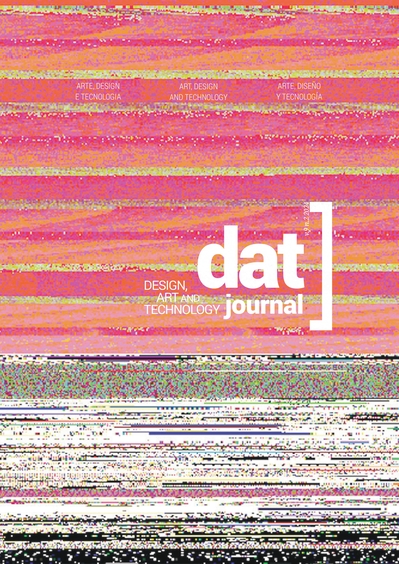Converging elements in projects for turbulent contexts
DOI:
https://doi.org/10.29147/datjournal.v9i2.821Keywords:
Complexity, Methodology, Design, Metadesign, Open SourceAbstract
Given the increasing complexity of the design problems, it is usual to design for turbulent contexts featured with inconstant variables and unpredictable prospects. In this paper we want to bring forward some proposals in the field of design methodology that try to deal with this type of challenge and that propose some changes for the traditional design paradigms. Two different fields are covered in the hope of finding convergent design elements: metadesign and the open source software development.
Downloads
References
BRUNS, Axel. Welcome to produsage. 2007. Disponível em <http://produsage.org> Acessado em agosto de 2008. DOI: https://doi.org/10.1145/1254960.1254975
CILLIERS, Paul. Complexity and postmodernism. London: Routledge, 2000.
DORST, Kees. The problem of design problems. In: University of Technology Sydney. Disponível em <http://research.it.uts.edu.au/creative/design/papers/23DorstDTRS6.pdf> Acessado em junho de 2013
GIACCARDI, Elisa; FISCHER Gerhard. Metadesign: a framework for the future of end-user development. In: End user development: empowering people to flexibly employ advanced information and communication technology. Dordrecht, The Netherlands: Kluwer Academic Publishers, 2004.
HEDLUND, Marc. Web Development 2.0. In: O’Reilly Radar Disponível em < http://radar.oreilly.com/2006/02/web-development-20.html > Acessado em março de 2013.
JONES, John Chris. Design Methods. New York: John Wiley & sons. 1992
LAWSON, Bryan. How designers think. The design process demystified. Oxford: Elsevier. 2006. DOI: https://doi.org/10.4324/9780080454979
MOORE, Alan. No straight lines. Cambridge: Bloodstone Books, 2011.
O’REILLY, Tim. What is web 2.0. In: O’Reilly Radar. Disponível em <http://www.oreilly.com/pub/a/oreilly/tim/news/2005/09/30/what-is-web-20.html?page=4> Acessado em junho de 2013
PAGE, Scott. Understanding Complexity. Chantilly: The Great Courses. 2009.
IZZOCARO, Silvia. Complexity, uncertainty, adaptability: Reflections around design research. In: Doctoral education in design: Foundations for the future. London: Staffordshire University Press, 2000.
RAYMOND, Eric. The Cathedral and the Bazaar. Sebastopol: O'Reilly Media, 2001. Kindle edition.
SCHÖN, D. A. The reflective practitioner: how professionals think in action. London: Temple Smith. 1983.
VAN ALSTYNE, Greg; LOGAN, Robert. Designing for Emergence and Innovation: Redesigning design. In: ARTIFACT. Disponível em <http://scholarworks.iu.edu/journals/index.php/artifact/article/view/1360/1390> Acessado em junho de 2013.
Downloads
Published
How to Cite
Issue
Section
License
Copyright (c) 2024 DAT Journal

This work is licensed under a Creative Commons Attribution 4.0 International License.


























